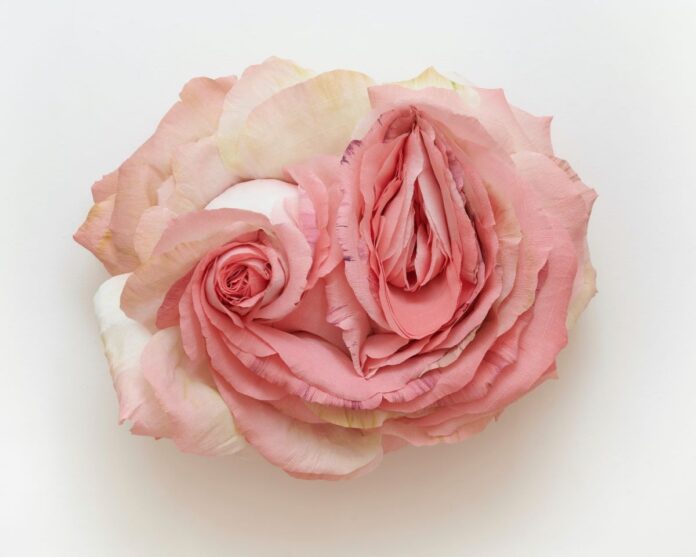As a sculptor working in the medium of paper, Tiffanie Turner arrived at her subject and materials after an epiphany about constructing a piñata that resembled a peony. Before she even felt qualified to do so, she began teaching others and even wrote a book, The Fine Art of Paper Flowers (Watson-Guptill/Penguin Random House), to share her techniques in papier-mâché.
“It has taken several years and many sculptures to arrive to where I am today with the work, using these giant paper flowers to remind us of earthly forms and human conditions that are important to me. It is such a slow evolution because of the massive amounts of time everything takes,” Turner told 48hills.
Turner grew up in the woods of New Hampshire and attended Phillips Exeter Academy. She enrolled in a five-year architecture program at Rensselaer Polytechnic Institute in upstate New York, receiving her Bachelor of Architecture/Bachelor of Building Science in 1993. While she was in school, she had no real interest in botany or flowers, which perplexes her, given her current passion.
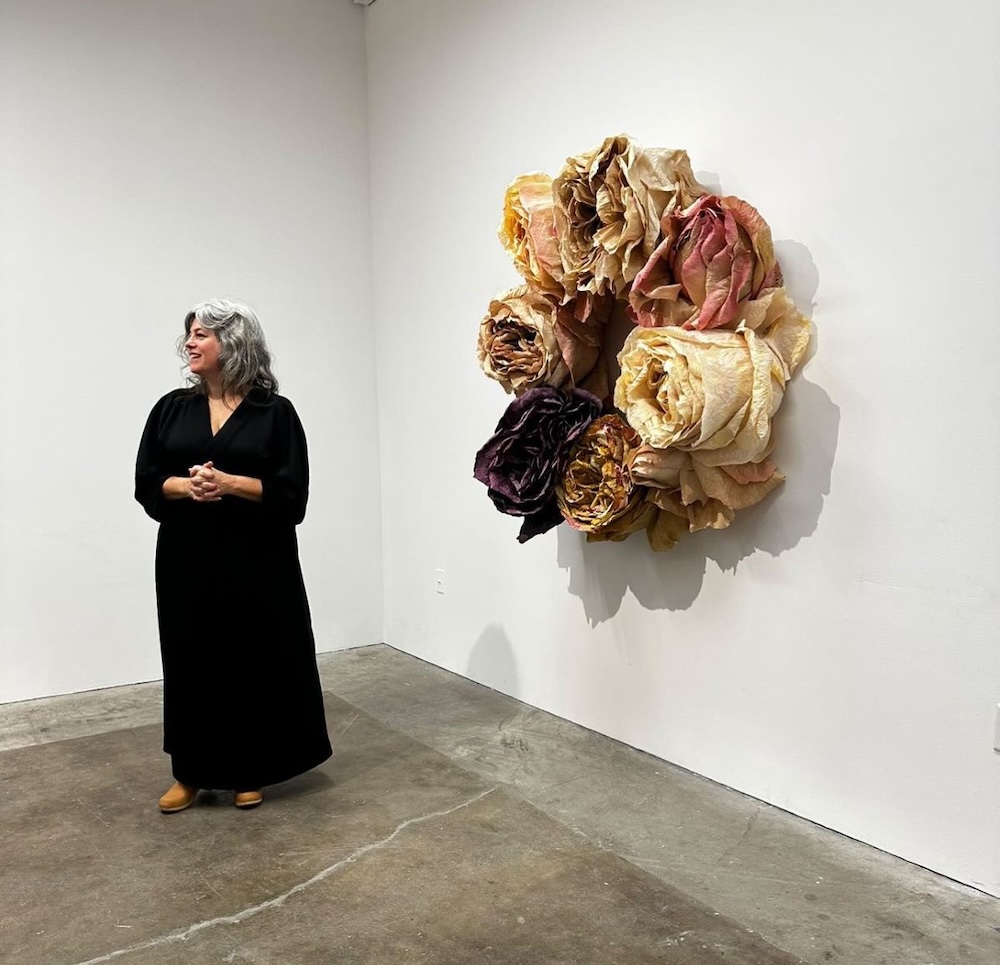
“I made my way west across the United States after I graduated college. First to New Mexico for two years to find work as an architect, then to San Francisco for love. It took me almost 20 years to finally settle in and stop thinking that I would be moving back to the East Coast sometime soon. I’m a Californian through and through now,” she said.
Turner now lives high on a hill in Fairfax with her husband and two children, after spending 18 years in the city. She was forced to move in 2018: She and her family were evicted from their San Francisco Victorian at Oak and Divisadero when the owners decided to sell the property. She describes the process of losing it, via the Ellis Act, as an incredibly painful time with hundreds of strangers touring their home over several stressful months.
“We figured things out and ultimately did land on our feet in West Marin, where we love being so immersed in nature while still being very connected to San Francisco. We really loved our location at the intersection of the Panhandle, DMV Heights, Lower Haight, Alamo Square, and NOPA, and had been in that neighborhood for a large and important part of our lives. It was very hard for all of us to leave.”
She says she came through the back door of the Bay Area art community and feels a tenuous-but-loving grip on her connection to the region. She feels there has been a willingness to gamble on both her ambition and the form and medium of her artwork—which she describes as “not necessarily aesthetic” botanical paper sculptures—and she is very grateful for it.
“I love the opportunities I’ve found here through the kindness and trust of people like Giselle Gyalzen at Rare Device, who gave me the opportunity of my first show in 2014 and several after that; Kevin Chen and the de Young Museum, who accepted me into the (sadly defunct) artist-in-residence program in 2016; and Eleanor Harwood, my current gallerist, who also rolled the dice on my work and took me on in 2018,” Turner said.
Help us save local journalism!
Every tax-deductible donation helps us grow to cover the issues that mean the most to our community. Become a 48 Hills Hero and support the only daily progressive news source in the Bay Area.
She has also met a lot of people along the way who are “trading in similar adaptations” of traditional crafts into contemporary artworks such as hers. Turner feels this awareness and inclusion has really helped her sculptures be accepted as not just decor but as work with meaning and message.
“I’m not sure that would have happened in some other parts of the country. I don’t think I would have had the success I’ve had or have been accepted into the art community as readily if I had started this work in New York. That is my suspicion anyway,” she said.
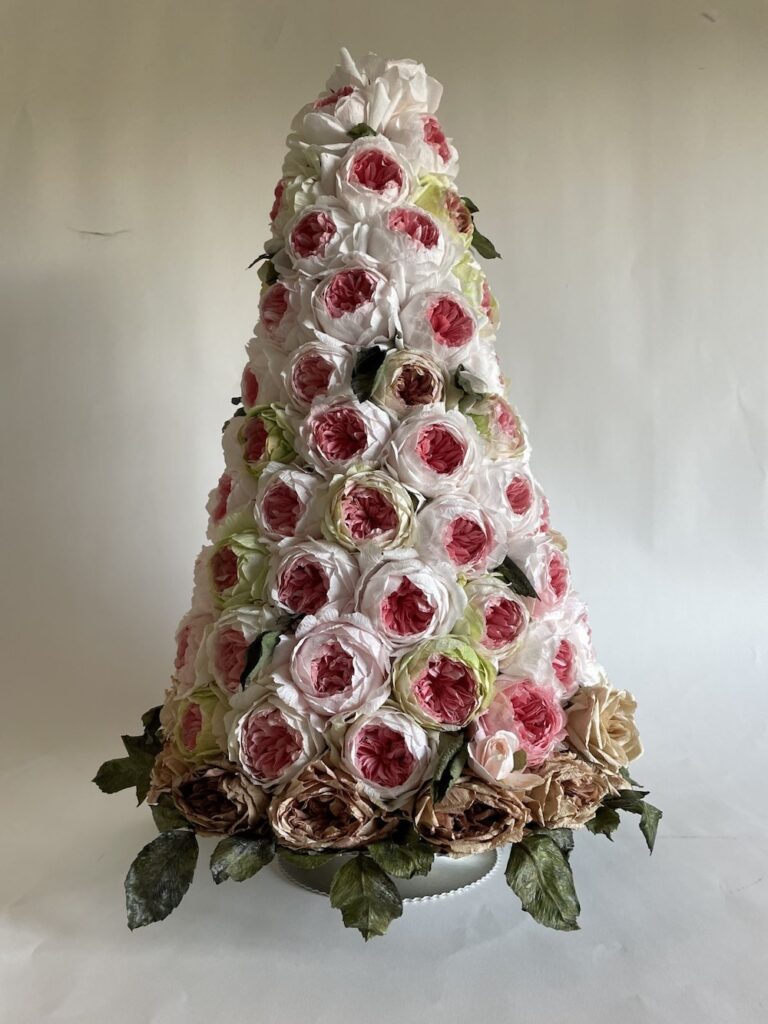
Turner’s husband says she has had flowers inside her since the day they met, during which time she was an amateur botanical watercolor painter with ambitions to be the next Charles Rennie Mackintosh (who was also an architect and artist.) She reads garden memoirs and journals; Derek Jarman’s Modern Nature, Dan Pearson’s Natural Selection, and Amy Merrick’s On Flowers are her absolute favorites.
“I mostly dream about working when I’m not working. I just have an unexplainable desire to make flowers and use my hands, and it has not gone away in the 10-plus years I’ve been making paper flowers. I am so lucky to sit down every day and create,” she said.
Turner says she always makes flowers that are based on a real specimen, even when they end up “metastasizing” into something more fantastical. Grounding her work in botany, she is seeking to get as close to the real thing as possible. And, she says, the problem solving and engineering required of both her small and large-scale works scratch the itch she has from leaving an architecture career behind.
“Some of the most creative parts of my work entail me keeping images of flowers that are compelling, considering ailments or problems that can befall them, and incorporating the issues I want to talk about in the work. All of this culminates into sketching up ideas and advancing them into something that will keep me busy building for several months,” she said.
The issues she wants to explore within her sculptural works can be filtered down to subjects of inequality and exposing truths, sometimes through humor and irony and sometimes through beauty, or what she refers to as “beautiful-looking trauma.”
“I always start with a flower. Though I am nowhere near being a botanist, I am looking at the physical characteristics that would compel me to want to try to replicate it as a large form. I feel like, from my place of privilege in the world, looking at what makes all of this so ugly is at the core of my work. The gloriousness and commonality of flowers fight against that as I sculpt them, and that is what creates an exquisite and subtle tension in what I create,” Turner said.
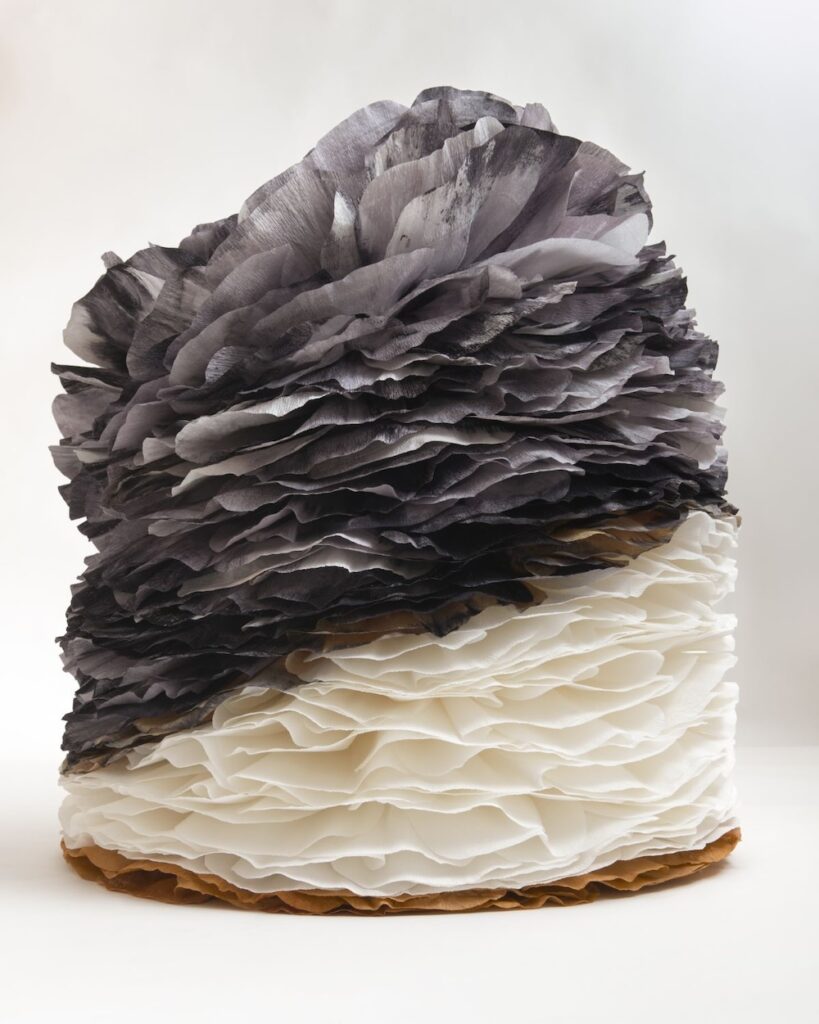
Despite the scale in which she works on both freestanding and wall pieces, Turner has spent nearly her entire career working in a space shared with her family. In San Francisco, her space consisted of one small kitchen countertop next to the stove, in Fairfax, she has commandeered the dining room.
“It is NOT ideal and has really taken a toll on my incredibly patient family, while at the same time has made them an integral part of everything I do because, gigantic or small, it’s all right there in our faces every day,” she said.
But recently completing work on a new studio—a treehouse structure she calls her “plywood palace”—she finally has a space all her own, where she can leave a mess and pick up where she left off the day before. On the land surrounding the studio, she engages in “a Sisyphean fight” with steep hills, drought conditions, and wild deer in order to grow the floral specimens for use as reference in her sculptures.
“Being sunken into nature with views across our valley makes it almost like working in a shrine, but it has taken a lot of time for me to get used to working in that kind of silence,” she said.
Turner does not like a lot of ephemera in her workspace, saying that it invites stagnancy. Instead, she prefers a tabula rasa, a blank slate devoid of any remnants of past work that might inhibit access to fresh, infinite possibilities.
“When I go to a residency and they ask me what I need, I always just ask for electricity and a stool. That’s really all it takes. It’s all upstairs,” she said.
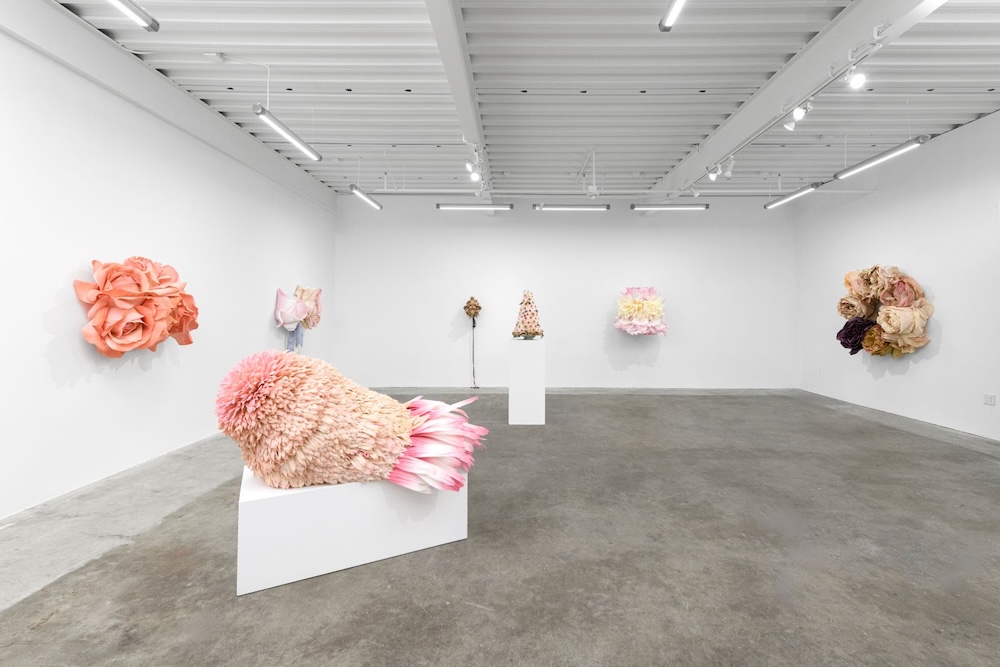
A day in the studio is either one of mass production or meticulous petal application—it can take all day to add three or four petals to a sculpture. Every single petal is hand-cut and hot-sculpted with glue, a tedious and time-consuming process that can require from three to five months to create a sculpture.
It also takes time to create the bases of the flowers, primarily made from papier-mâché but often incorporating metal and wood rods, basketball hoops, wooden forms, mailing tubes, or Sonotubes—large, reinforced cardboard tubes. Some days include the dying or staining of paper, a heavy-duty crepe on rolls made in Italy.
“I might spend a few weeks’ worth of mornings out in the front of our house with a giant vat of hot tea and a clothes-drying rack, preparing hundreds of feet of stained paper for one flower,” she said.
Turner is primarily represented by Eleanor Harwood Gallery, located within Minnesota Street Project in San Francisco. She is seeking East Coast and international representation to expand exhibition opportunities and to broaden her exposure to larger numbers of people at once. Three of her works are included in the current exhibition, GROW!, curated by Marianne McGrath at the Palo Alto Art Center, which runs from September 21 through December 15.
In the fall of 2023, Turner exhibited a body of work spanning two and a half years that began early in the pandemic. Supported by a large grant specifically for Marin County residents from the Pirkel Jones Fund, the exhibition American Grown was shown at Eleanor Harwood Gallery, followed by a stint at the Saint Joseph Art Foundation. Several of her pieces were acquired by a museum in Saudi Arabia.
“This opportunity allowed me to stretch my sculptures into new physical shapes and explore conceptual ideas that I had never had the freedom to create before,” she said.
Turner continues to teach, hosting long-form residential retreats every other year in the English countryside. After her next retreat, Turner has a large-scale commission to complete and plans to embark on her next large body of work.
“The new work will be rose-heavy, I can feel that,” she said.
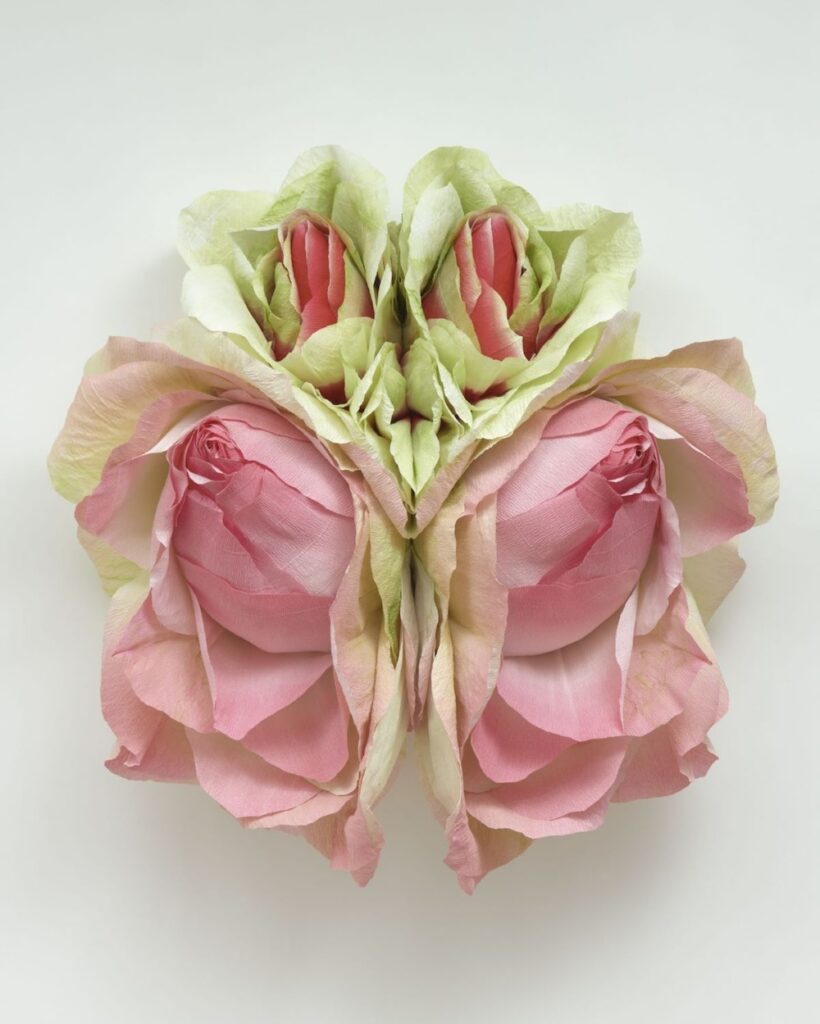
Regarding the arc of her work and where it is headed, Turner says she has been having “some very eye-opening moments that late-stage capitalism is here.” In some way, the new work is a continuation of themes explored in American Grown, the concept of American exceptionalism and the differences in how children are being raised now compared to the past. She says “the scales have been falling from her eyes” about how this country runs.
“My show What Befell Us at Eleanor Harwood Gallery in 2019 was primarily about aging and becoming invisible. Now that I have exorcised a lot of those feelings through that work and am personally well into middle age/menopause, I feel like there are ideas of metamorphosis lurking in the back of my mind that need to be explored. There is a lot of personal stuff from my youth I still have not woven into my work. I am waiting for the day I’m brave enough to see where that might take my sculptures,” she said.
Artist Tiffanie Turner is at once thoughtful, meticulous, and hard at it. She hopes her audience can grasp the effort and ingenuity that go into her work, and encourages wonder about that technique and execution.
“Mostly, I want people to be drawn in by the flowers, something so very familiar to all of us, and feel comfortable with that connection,” she said. “If viewers can read into the work what I was thinking or the formal relationships I am trying to portray, that’s a fun bonus.”
Turner believes that everyone needs help forging their own true path. She can pinpoint the moment she did just that, which took place while working on a home in Sausalito under another architect. Riding the Golden Gate Transit bus home over the bridge she asked herself, “What would I design if this was for me?” She grabbed a cocktail napkin out of her coat pocket and started scribbling out a new plan that was based purely on what she felt was right for the space.
“That turned out to be the design that was built, and it taught me so much. It was a pivotal moment in my life. It empowered me to put blinders on and work to the beat of my own drum ever since,” Turner said. “Simply put in modern terms, you do YOU. That’s what you have to work with. That’s what you have to give.”
For more information, visit her website papelsf.com or on Instagram.

